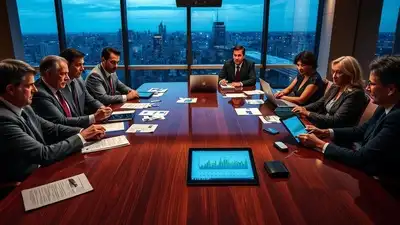ARTICLE AD BOX

Modern fraudsters now blend technological knowledge with deep organisational awareness to create schemes that often evade traditional controls. (AI image)
By Manoj Kumar VijaiDuring a boardroom discussion, a CEO posed a critical question: ‘How sophisticated has fraud really become?’ After our extensive casework, we can confidently say: “extraordinarily so!”The nature of fraud has changed in recent times.
While traditional kickbacks and defined schemes persist, modern fraudsters now blend technological knowledge with deep organisational awareness to create schemes that often evade traditional controls.A Landscape in TransformationProcurement fraud is a prevalent concern, followed by sales and distribution fraud, e-commerce vulnerabilities, inventory manipulation, manpower fraud issues, and code of conduct violations.
These trends are consistent with findings from our recent report on emerging corporate fraud patterns.Particularly, we have noted that organisations with rapid digital transformation initiatives are especially vulnerable when they implement new systems without updates to their control frameworks. This creates gaps that fraudsters can exploit through techniques, such as system manipulation, false documentation, and collusion across multiple touch points.
Today's schemes are particularly troubling because they can go unnoticed for extended periods. Even when concealed, they fit in naturally within individual control settings, making them appear perfectly normal. A striking aspect is not just the variety of schemes but how they are carried out. Most concerning, though, is when multiple actors work together to ensure the scheme stays undetected.The Procurement VulnerabilityProcurement today is vulnerable due to three linked factors:
- Substantial financial flows
- Third-party relationships, and
- Complex channel networks
We have seen sophisticated manipulation where perpetrators temporarily alter bank details for legitimate vendors, diverting payments before redirecting the records to their original state—creating a digital shell game that is difficult to detect.Beyond Procurement: Fraud's Expanding HorizonThe sales function has become fertile ground for innovative fraud schemes. Some executives have managed to hold jobs at multiple companies at the same time, using digital alibis that make it seem like they are actively working. Meanwhile, expired products are repackaged and pushed into secondary markets, while sales data is manipulated to trigger promotion payments, creating an illusion of profit.E-commerce, on the other hand, has created new avenues for fraud. One growing tactic is creating fake buyer networks to simulate transactions. Another is altering digital inventory records to inflate valuations and mislead investors.Inventory fraud is no longer just about theft. Fake production numbers hide the real output. Unapproved excess goods are secretly diverted, making fraud tougher to detect.Even code of conduct breaches have become more sophisticated, including data leaks, document tampering, and secret moonlighting.Technology: The Double-Edged SwordTechnology has become both enabler and battlefield in modern fraud schemes. GPS manipulation to indicate false location data for field employees. Identity fragmentation allows fraudsters to bypass compensation controls by distributing earnings across multiple identities. Payment systems face multi-platform attacks, and sophisticated communications spoofing diverts funds through social engineering.Corporate exposure risk has grown substantially as competitive intelligence gathering becomes more sophisticated.The profile of today’s fraudsters provides critical clues for detection. Middle management is often a key risk area, with cases involving professionals aged 35–45. High performers with deep organisational knowledge and too much control tend to be frequent offenders.Our biggest challenge is not just limited to stopping individual fraud—it is about tackling organised, strategic schemes.
Today’s fraudsters are skilled, coordinated, and harder to detect.Detection: Human Insights Trump Technical ControlsDespite investing in fraud detection technology, human judgment remains key. Automated alerts miss many irregularities. However, most real findings come from employee tips and managerial oversight. Technology alone cannot replace human awareness. Businesses that encourage open communication and train employees to recognise fraud stay ahead than those relying solely on systems.Building Multi-Layered DefensesKeeping an organisation safe from fraud requires a well-planned approach. It requires combining secure systems, clear processes, and sharp human judgment:
- Early warning systems help spot unusual patterns before they cause harm. They work best when they look beyond financial data and include behavioural signs like timing, frequency, and system access.
- Policies and controls should evolve continuously to address emerging threats. Too many organisations treat controls as static rather than adaptive systems.
- Awareness programmes featuring real-world case studies yield better results. Understanding actual fraud incidents turns abstract policies into tangible safeguards.
- Expanding whistleblower channels to include vendors and customers greatly increases detection capabilities. External parties often notice issues that internal teams might overlook.
- Thorough checks on third parties and employees, regular job rotations in key roles, and commercial crime insurance strengthen fraud protection.
A Path ForwardCorporate fraud is no longer a problem to solve. It is a challenge that keeps shifting. Organisations that recognise this do not rely only on rules or technology. Instead, they build a workplace where awareness, accountability, and swift action are part of the culture. At the end of the day, it is not about catching fraud when it happens—it is about creating an environment where fraud struggles to exist in the first place.
That is what will make businesses truly resilient.Manoj Kumar Vijai is Office Managing Partner - Mumbai & Head - Risk Advisory, KPMG in India



.png)
.png)
.png)
















 3 hours ago
4
3 hours ago
4









 English (US) ·
English (US) ·